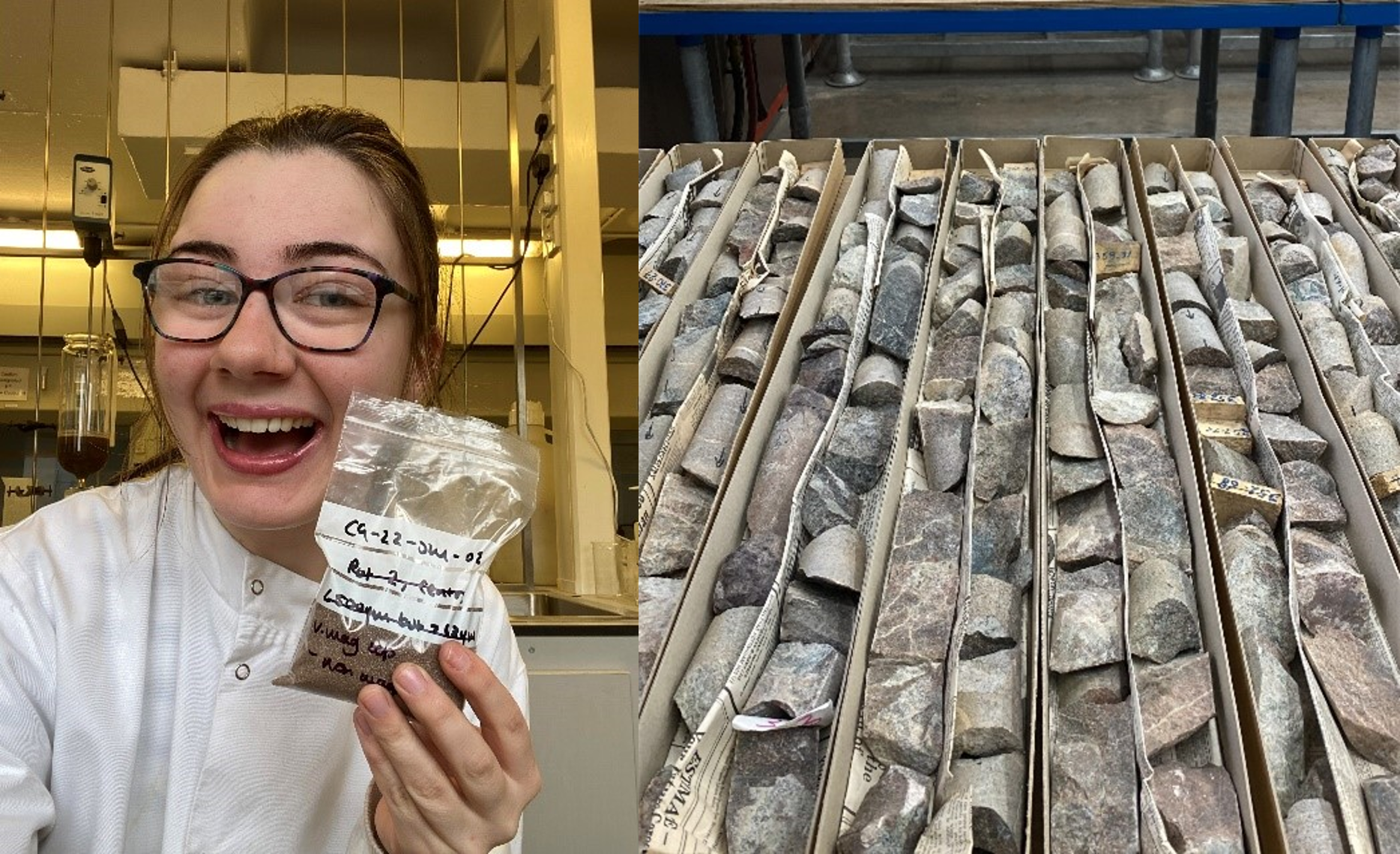Hello, my name is Chloe Gemmell, and I have recently started my PhD in Geosciences (Geology) at the University of Aberdeen as part of QUADRAT cohort 6. I obtained my undergraduate degree from the University of Glasgow with the initial intention of graduating with a Geography degree at the end of four years. This wasn’t the case. I selected Earth Science as one of my electives for the first two years and ended up finding my passion for geology throughout some second-year igneous petrography labs. I switched from a Master of Arts in Geography to a Bachelor of Science in Geology for my honours year and haven’t looked back since. Little did I know that most of my second, all my third and much of fourth year would be online due to COVID. Despite all planned field classes being cancelled, I managed to make the best of a challenging situation and my interest in geology continued to grow. I developed an interest in igneous rocks, especially their isotopic and geochemical characteristics and how this data can inform us about the sources of these rocks. My planetary science focused undergraduate dissertation titled ‘Mineralogy, mineral chemistry and petrology of five monomict Ureilites, prioritising Carbon phases in Goalpara’ further sparked my interest in research.


I continued my studies through completing a Masters of Science by Research at the University of Glasgow, during which I developed a strong interest in Scottish geology. My research focused on the geochronology (i.e., dating) of several under-studied Caledonide granitoid intrusions and a subvolcanic complex within the Southern Uplands of Scotland, with the broad aim of better constraining the geodynamics and tectonic events pre- and post-emplacement along this sector of the Caledonian orogen. One aspect of my research involved collaboration with the British Geological Survey to investigate potential critical metal enrichment in the Black Stockarton Moor subvolcanic complex. This case study sparked my interest in applied igneous geology, specifically the genetic and age relationship between magmatism and mineralisation and ultimately, critical mineral enrichment potential in Scotland.


My PhD, titled ‘Mineral prospectivity of the Caledonide intrusions of the UK and Ireland’ is an excellent opportunity to explore several questions I had during my Masters (e.g., what is the relationship between magmatism and mineralisation? What are the controls on mineralisation?) at a regional scale in the Grampian Highlands of Scotland. Critical minerals are especially topical in the UK as we aim for zero emissions by 2050, therefore I chose this project as it will allow me to investigate my own interests whilst also contributing knowledge and data on critical mineral resources to my home country.





















































